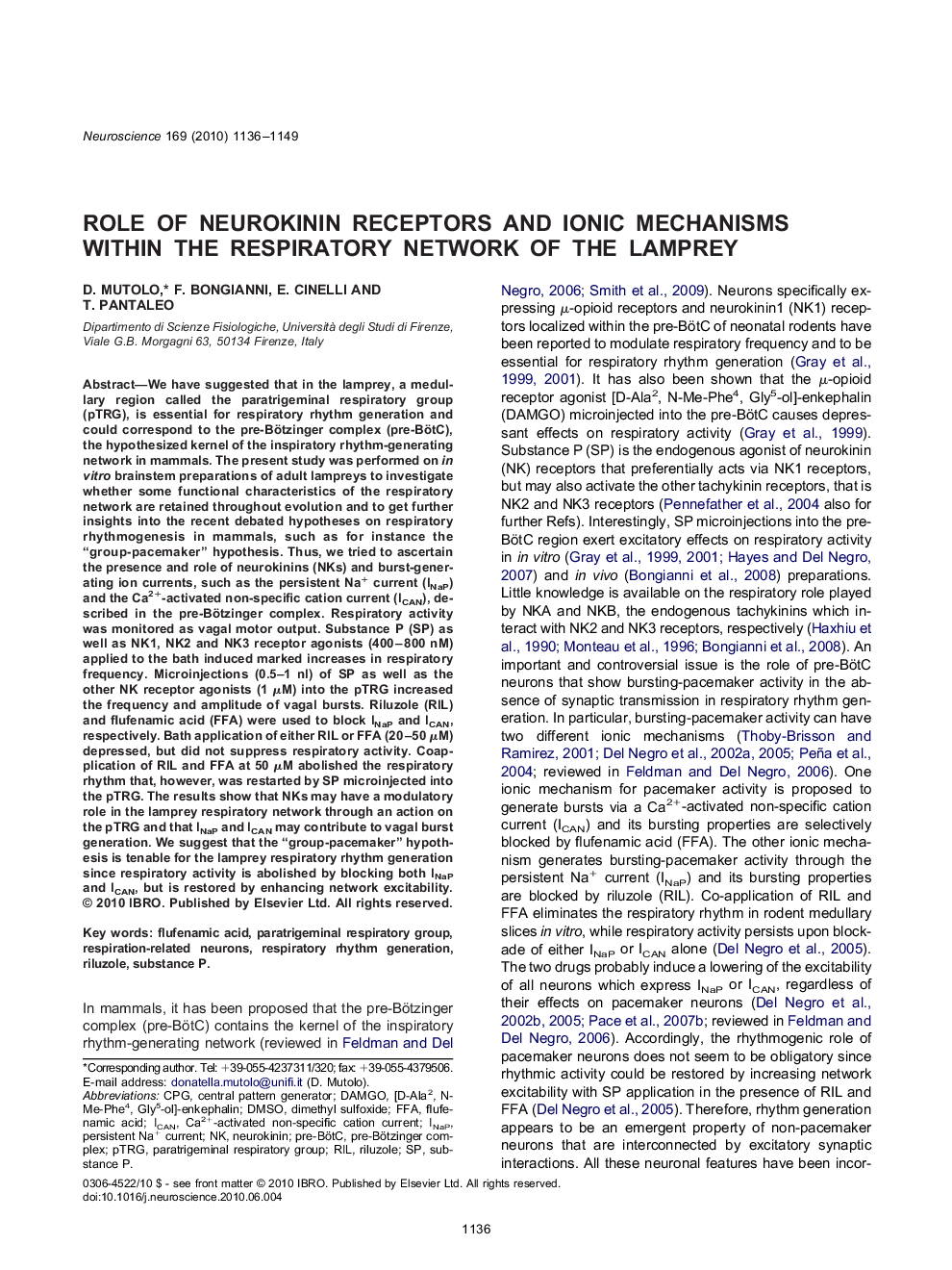| کد مقاله | کد نشریه | سال انتشار | مقاله انگلیسی | نسخه تمام متن |
|---|---|---|---|---|
| 6277001 | 1295747 | 2010 | 14 صفحه PDF | دانلود رایگان |

We have suggested that in the lamprey, a medullary region called the paratrigeminal respiratory group (pTRG), is essential for respiratory rhythm generation and could correspond to the pre-Bötzinger complex (pre-BötC), the hypothesized kernel of the inspiratory rhythm-generating network in mammals. The present study was performed on in vitro brainstem preparations of adult lampreys to investigate whether some functional characteristics of the respiratory network are retained throughout evolution and to get further insights into the recent debated hypotheses on respiratory rhythmogenesis in mammals, such as for instance the “group-pacemaker” hypothesis. Thus, we tried to ascertain the presence and role of neurokinins (NKs) and burst-generating ion currents, such as the persistent Na+ current (INaP) and the Ca2+-activated non-specific cation current (ICAN), described in the pre-Bötzinger complex. Respiratory activity was monitored as vagal motor output. Substance P (SP) as well as NK1, NK2 and NK3 receptor agonists (400-800 nM) applied to the bath induced marked increases in respiratory frequency. Microinjections (0.5-1 nl) of SP as well as the other NK receptor agonists (1 μM) into the pTRG increased the frequency and amplitude of vagal bursts. Riluzole (RIL) and flufenamic acid (FFA) were used to block INaP and ICAN, respectively. Bath application of either RIL or FFA (20-50 μM) depressed, but did not suppress respiratory activity. Coapplication of RIL and FFA at 50 μM abolished the respiratory rhythm that, however, was restarted by SP microinjected into the pTRG. The results show that NKs may have a modulatory role in the lamprey respiratory network through an action on the pTRG and that INaP and ICAN may contribute to vagal burst generation. We suggest that the “group-pacemaker” hypothesis is tenable for the lamprey respiratory rhythm generation since respiratory activity is abolished by blocking both INaP and ICAN, but is restored by enhancing network excitability.
Journal: Neuroscience - Volume 169, Issue 3, 1 September 2010, Pages 1136-1149